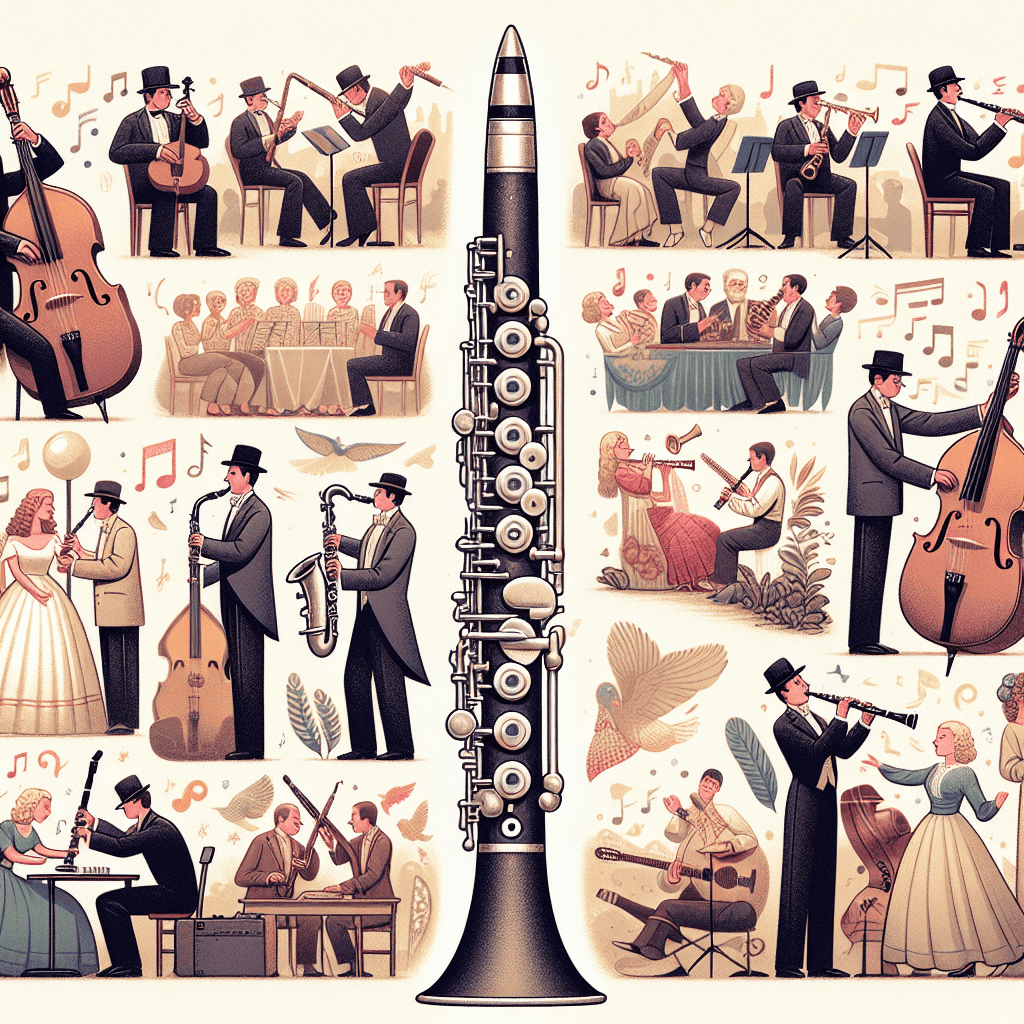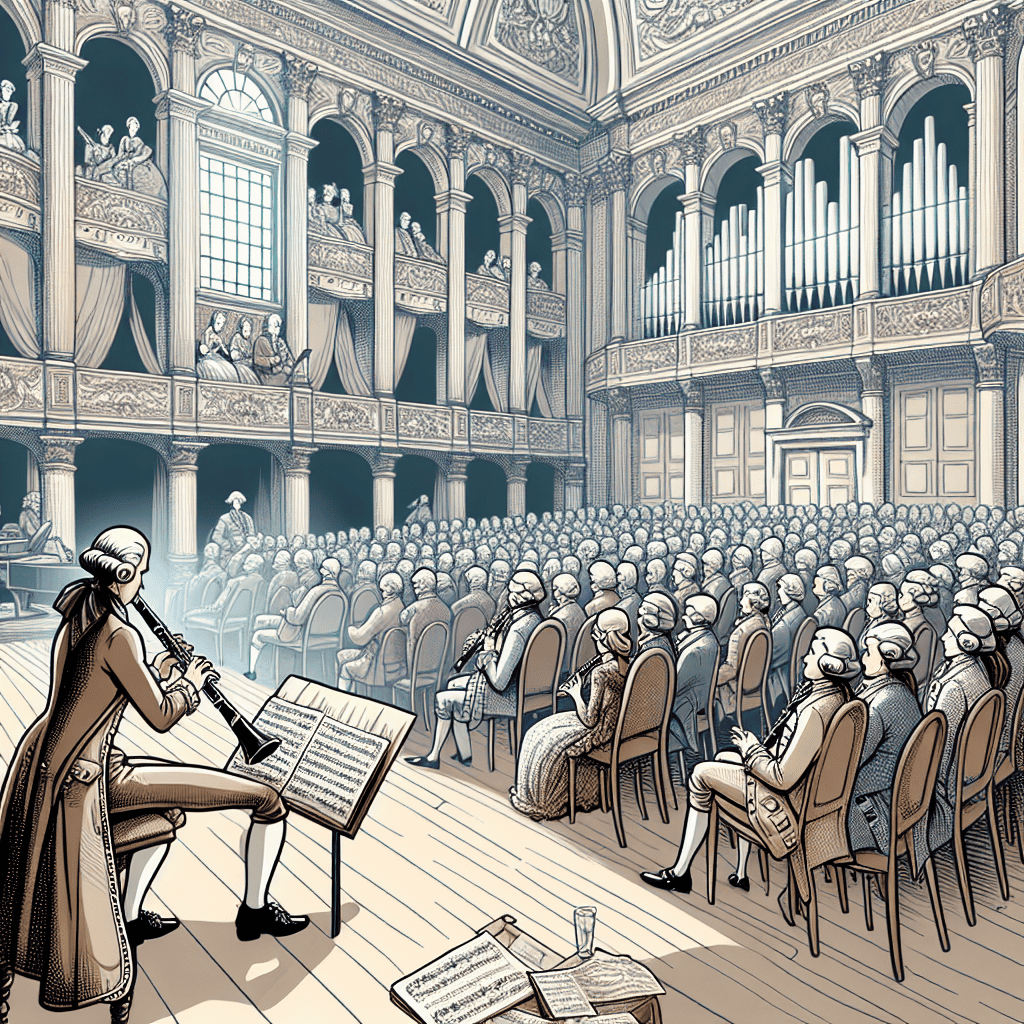In the ever-changing world of music composition, the clarinet has carved out a special place, offering composers a wide range of tones and expressive abilities. From classical symphonies to modern jazz, the clarinet's versatility is unmatched. Today, we explore the latest trends in music composition that spotlight this remarkable instrument.
The Rise of the Clarinet in Modern Orchestration
The clarinet has seen a resurgence in modern orchestration, with composers increasingly using its wide range and dynamic flexibility. The instrument's ability to blend seamlessly with strings and brass makes it a favorite for creating lush, textured soundscapes. Many contemporary works now feature extended clarinet passages, highlighting its lyrical qualities and technical prowess.
Jazz and Beyond: The Expanding Role of the Clarinet
While the clarinet has always been a staple in jazz, recent trends show it branching out into other genres. Fusion genres like world music, rock, and electronic music are embracing the clarinet's distinctive sound. This trend is partly fueled by musicians seeking new ways to innovate and differentiate their sound, and the clarinet offers the perfect vehicle for such exploration.
| Genre | Clarinet's Role |
|---|---|
| Classical | Primary melodic instrument, orchestral blending |
| Jazz | Improvisational solos, ensemble harmonies |
| World Music | Cross-cultural fusion, unique timbres |
| Electronic | Sampled sounds, effects processing |
Technological Advancements and the Clarinet
Technological advancements have also played a significant role in the clarinet's evolving presence in music composition. Digital recording techniques and effects processing allow composers to manipulate clarinet sounds in unprecedented ways. This has opened up new avenues for creativity, enabling the clarinet to take on roles that were previously unthinkable.
Extended Techniques and the Modern Clarinetist
Modern clarinetists are pushing the boundaries of what the instrument can do, employing extended techniques such as multiphonics, circular breathing, and overblowing. These techniques are being incorporated into compositions to create unique sound textures and effects. As a result, the clarinet is becoming a go-to instrument for composers looking to incorporate avant-garde elements into their work.
Martin Freres: A Legacy of Excellence
When discussing the evolution of the clarinet in music composition, it's impossible to overlook the contributions of storied brands like Martin Freres. This brand has been synonymous with quality and innovation, producing instruments that inspire both performers and composers. Their clarinets are known for their exceptional craftsmanship and rich, resonant tones, making them a favorite among professional musicians.
Compositional Techniques Emphasizing the Clarinet
In recent years, composers have developed specific techniques to highlight the clarinet's unique qualities. One such technique is using the clarinet to create contrast within a piece. By juxtaposing the clarinet's bright, piercing upper register with its warm, mellow lower register, composers can achieve dynamic contrasts that add depth and interest to their compositions.
Key Compositional Techniques for Clarinet
- Register contrasts
- Timbral exploration
- Extended techniques integration
- Cross-genre fusion
- Digital sound manipulation
The Clarinet in Film Scores
The clarinet has also become a prominent feature in film scores, used to evoke a wide range of emotions and atmospheres. Its ability to convey both warmth and tension makes it an ideal instrument for cinematic storytelling. Composers like John Williams and Hans Zimmer have utilized the clarinet to great effect, creating memorable and evocative soundtracks that resonate with audiences.
Educational Trends and the Clarinet
Educational institutions are recognizing the importance of the clarinet in modern music composition, with many conservatories and music schools incorporating advanced clarinet studies into their curricula. This trend is ensuring that the next generation of musicians and composers are well-versed in the capabilities of the clarinet, further solidifying its place in the future of music.
The Future of the Clarinet in Music Composition
Looking ahead, the clarinet's role in music composition shows no signs of diminishing. As composers continue to explore new sounds and textures, the clarinet will remain a vital tool in their arsenal. Whether in traditional settings or cutting-edge compositions, the clarinet's versatility and expressiveness will continue to inspire and captivate audiences around the world.
In conclusion, the clarinet's resurgence in music composition is a testament to its enduring appeal and versatility. From orchestral scores to jazz ensembles, and from film soundtracks to avant-garde compositions, the clarinet is proving to be an indispensable instrument in the modern musical landscape. As we move forward, brands like Martin Freres will undoubtedly continue to play a pivotal role in shaping the future of this beloved instrument.
Table of Contents
- The Rise of the Clarinet in Modern Orchestration
- Jazz and Beyond: The Expanding Role of the Clarinet
- Technological Advancements and the Clarinet
- Extended Techniques and the Modern Clarinetist
- Martin Freres: A Legacy of Excellence
- Compositional Techniques Emphasizing the Clarinet
- The Clarinet in Film Scores
- Educational Trends and the Clarinet
- The Future of the Clarinet in Music Composition







